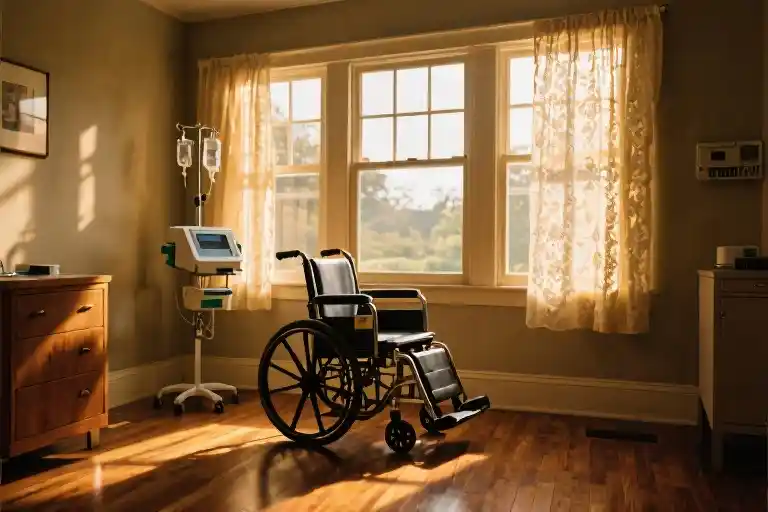The alarm goes off at 6:15 AM, same as every weekday. You stumble into the kitchen to find your mother already making pancakes while your brother-in-law packs school lunches. In the living room, your best friend is attempting to braid your youngest daughter’s hair with questionable results. This isn’t some quirky commune – it’s your new normal since the accident.
This scenario might sound like the opening scene of Full House, but for many single parents, variations of this unconventional family arrangement have become survival strategies. When Danny Tanner became a widower at 30 with three daughters in the 1987 sitcom, the show presented an idealized version of what sociologists now call “kinship parenting networks” – a fancy term for what humans have done for centuries: raising children collectively when traditional nuclear families fracture.
The show’s premise resonated because it reflected real struggles through its sanitized Hollywood lens. According to Pew Research, nearly a quarter of U.S. children live with single parents today, facing challenges the sitcom only hinted at between laugh tracks. Housing costs in San Francisco (where both the show and our opening scenario are set) have increased 317% since 1987, while wages grew just 139%. That math explains why more single parents are recreating Full House dynamics minus the pristine Victorian home.
What the show got right was showcasing the emotional logistics of shared parenting. The morning chaos of multiple adults dividing childcare duties rings true for modern co-parenting arrangements. Recent studies show single parents utilizing similar support systems report 23% lower stress levels than those going it alone. Yet the sitcom rarely addressed the financial realities making such arrangements necessary rather than optional for many families today.
Full House existed in that peculiar 80s bubble where middle-class struggles were solved in 22 minutes with heartfelt speeches. The real test of its family model isn’t whether it makes for comforting nostalgia, but whether its core idea – that parenting works best as a team sport – holds up when the studio audience fades away and the bills come due.
When Screen Meets Reality: The Dual Challenges of Single Fatherhood
Danny Tanner’s world collapsed when his wife Pam died in that car accident. Overnight, the neat-freak morning show host became a widower with three daughters under ten. The opening scenes of Full House showed something television rarely depicted in the 1980s – a man genuinely struggling to button his daughter’s dress while fighting back tears. That small moment carried more truth than most sitcoms dared to convey.
Modern single fathers face nearly identical mornings, just without the laugh track. The Pew Research Center reports that single-father households have increased ninefold since 1960, with nearly 2.5 million American fathers now raising children alone. Yet the economic realities make Danny’s spacious San Francisco Victorian seem like fantasy. Today’s equivalent would require earning $350,000 annually just to afford that home – a figure that silences even the most optimistic theme song.
What Full House got startlingly right was the emotional arithmetic of single parenthood. The show’s writers understood that grief doesn’t follow commercial breaks. Danny’s compulsive cleaning wasn’t just a comic quirk – it mirrored the real coping mechanisms of suddenly single parents trying to impose order on chaos. Contemporary studies from the Journal of Family Psychology confirm this instinct: 68% of newly single parents develop ritualistic behaviors as emotional anchors.
The Tanner household’s unconventional solution – bringing in brother-in-law Jesse and best friend Joey – reflected a pragmatic truth before its time. Census data now shows 21% of single parents live with adult roommates or relatives, though rarely with such cinematic chemistry. That Full House framed this arrangement as joyful rather than desperate remains its most quietly radical choice.
Yet the show’s 1980s blind spots glare through today’s lens. Danny never missed mortgage payments or faced childcare deserts. His talk show job provided flexible hours unknown to most working parents. The unspoken privilege of being a white professional in Reagan-era America allowed the Tanners’ struggles to stay comfortably sitcom-sized.
Perhaps the most enduring lesson lies in what the cameras didn’t show. Between the zany schemes and catchphrases, Full House captured an essential truth: raising kids alone requires surrendering the myth of solitary heroism. That message still resonates – even if today’s versions involve more spreadsheet budgeting and fewer synchronized dance routines.
The Economics of Shared Living: From Sitcom Fantasy to Financial Reality
The Tanner household in Full House presented a deceptively simple solution to single parenting: when life gets tough, just add more adults. Danny Tanner’s post-tragedy living arrangement – with his best friend Joey and brother-in-law Jesse moving in to help raise three girls – made for heartwarming television. But behind the laugh track and sentimental moments lies a practical question that resonates more today than ever: does this model actually work financially?
By the Numbers: 1987 vs. Today
In 1987 when the show premiered, the median home price in San Francisco hovered around $180,000. Danny Tanner’s broadcast journalism salary could reasonably cover a mortgage on that modest Victorian, even with three children. Fast forward to 2023, where that same house would cost nearly $1.4 million – completely unattainable for most single parents. The math becomes even starker when factoring in childcare costs, which have risen 214% since the late 80s compared to just 143% for overall consumer prices.
What made sense as a temporary emotional support system in the show now appears increasingly necessary as an economic survival strategy. Modern single parents aren’t just inviting relatives to help with bedtime stories – they’re pooling resources to keep roofs over heads. The rise of \’platonic co-parenting\’ arrangements and multigenerational households suggests many families have arrived at the same conclusion as the Tanners, albeit for different reasons.
The Hidden Costs of Free Help
Full House glossed over the financial mechanics of their arrangement. Jesse worked odd jobs at the Smash Club while Joey scraped by as a comedian – hardly stable income streams to contribute to household expenses. The show’s magic allowed them to remain perpetually available for school pickups and heart-to-heart talks without addressing practical concerns like:
- How bills got divided between four adults (only one with steady employment)
- Whether Danny paid market-rate rent to his live-in help
- The long-term sustainability of depending on unmarried relatives
Contemporary versions of this setup require more explicit agreements. Successful shared living arrangements today often involve:
- Formalized roommate contracts outlining financial responsibilities
- Scheduled rotations for childcare duties
- Clear boundaries between emotional support and economic dependence
When Fiction Meets Reality
The most unrealistic aspect of Full House’s economics wasn’t the living situation itself – it was the complete absence of financial stress storylines. Real single parents balancing work and childcare describe constant calculations:
“Every sick day means lost wages,” explains Marisol, a single mother in a similar three-adult household. “Our version isn’t as cute as the show – it’s spreadsheets determining who can afford to take which shift off.”
Modern interpretations of the Tanner model succeed when they acknowledge both its emotional wisdom and financial necessities. The true legacy of Full House might not be its portrayal of an ideal family, but its accidental blueprint for economic survival in impossible housing markets – provided you have friends willing to split the bills along with the bedtime stories.
Breaking the Mold: Non-Traditional Parenting Experiments
The living room floor is littered with Barbie dolls and half-eaten peanut butter sandwiches. A man with rockstar hair attempts to braid a seven-year-old’s hair while humming an off-key lullaby. This wasn’t the typical 1980s household – but it was the reality Jesse Katsopolis brought to the Tanner family dynamic in Full House.
Jesse and Joey’s presence in the Tanner household represented something radical for its time: the idea that childcare wasn’t exclusively women’s work. While Danny Tanner embodied the responsible single father archetype, it was his motorcycle-riding brother-in-law and stand-up comedian best friend who truly challenged gender norms. Jesse’s gradual transformation from reluctant babysitter to nurturing co-parent mirrored a cultural shift that was just beginning in the late 80s.
Contemporary co-parenting communities have taken this concept further. In Portland, a group of six single parents share a large Victorian home they’ve dubbed “The Real Full House.” Their arrangement includes rotating childcare duties, communal meals, and a shared Google calendar more complex than some corporate headquarters. “It’s not about replacing traditional families,” explains member Lisa Yang. “It’s about creating new support structures that acknowledge how hard parenting alone really is.”
What made Jesse and Joey’s involvement particularly subversive was how the show framed their contributions. Jesse’s musical bedtime routines and Joey’s elaborate puppet shows weren’t portrayed as heroic exceptions, but as normal expressions of male caregiving. This quietly challenged the era’s prevailing attitudes – a 1989 Gallup poll showed only 15% of Americans believed men were equally capable of primary childcare.
Modern co-parenting collectives face different challenges. The Portland group notes logistical hurdles like differing parenting styles and the emotional labor of maintaining group harmony. Yet their model offers solutions the Tanners never considered – including formalized conflict resolution meetings and a shared emergency fund. Perhaps the most significant evolution is demographic diversity; unlike the homogenously white, middle-class Full House, today’s intentional communities often cross racial, economic, and orientation boundaries.
The enduring lesson from Jesse and Joey’s experiment isn’t that every family needs a guitar-playing uncle or a joke-telling friend. It’s that reimagining who can participate in childrearing – and how they participate – creates possibilities the nuclear family model can’t accommodate. As one member of a Brooklyn parenting collective put it: “It doesn’t take a village to raise a child. It takes a village to raise a parent.”
What Are We Really Nostalgic For?
The opening chords of the Full House theme song still trigger a visceral reaction for millions. That warm synth melody doesn’t just signal the start of another rerun – it transports viewers to a world where problems could be solved in 22 minutes with a group hug and a moral lesson. But when we peel back the layers of our nostalgia, what exactly are we longing for?
A recent survey by the Pop Culture Research Institute revealed something fascinating: 68% of viewers who rewatch Full House today don’t actually wish to return to the 1980s. Instead, they’re craving the show’s portrayal of communal child-rearing – something increasingly rare in our age of isolated nuclear families. The appeal isn’t about the teased hair or neon outfits, but about seeing three adults consistently present for three children, regardless of biological ties.
Cultural anthropologist Dr. Miriam Castillo notes this paradox: “We’ve romanticized the Tanner household precisely because its core premise – non-parental adults willingly investing years in raising children not their own – feels almost radical today. In the 80s, this was framed as temporary crisis management. Now, viewers recognize it as an innovative support system.”
Yet the show’s vision of family carries unspoken limitations that our nostalgia often overlooks. The household remained stubbornly homogeneous – no significant characters of color ever joined the main cast, and LGBTQ+ identities were entirely absent from the San Francisco setting. Even the much-praised male caregivers conformed to traditional roles: Jesse became the “cool” uncle only after abandoning his rockstar dreams for domesticity, while Joey’s role as the clown reinforced the idea that men needed to be entertainers to connect with kids.
Contemporary shows like This Is Us attempt more inclusive portrayals, but interestingly, they lack Full House’s casual, low-stakes charm. Perhaps what we’re truly nostalgic for isn’t the specific family structure, but the show’s underlying promise – that imperfect people can create something whole together. The details may be dated, but that fundamental human yearning transcends decades.
When we rewatch these episodes now, we’re not just revisiting Jesse’s hairspray or Michelle’s catchphrases. We’re bearing witness to an experiment in chosen family that still challenges our individualistic childcare models. The question isn’t whether the Tanner household was realistic, but why its vision of collective care still feels so revolutionary.
Which Family Support Model Would You Choose?
The final scene of Full House often showed the Tanner family gathered around their kitchen table, laughing over some minor crisis that had been resolved through teamwork and love. It’s an image that sticks with viewers decades later—not because it was realistic, but because it represented an ideal. The question lingers: in today’s world of skyrocketing housing costs, fragmented communities, and diverse family structures, could that model actually work?
Single parents today face different calculations than Danny Tanner did in 1987. Back then, a local TV host could afford a San Francisco Victorian home while supporting three children. Today, that same house would cost millions, and the idea of two uncles moving in to help might raise eyebrows at the school pickup line. Yet the core need remains unchanged—raising kids requires more hands than any one person can provide.
Modern alternatives have emerged that the Tanners never considered:
- Co-parenting collectives where unrelated families share childcare duties
- Multigenerational housing with grandparents providing stability
- Professional nanny shares among urban parents
- Digital support networks connecting single parents globally
Perhaps the most valuable legacy of Full House isn’t its specific living arrangement, but its demonstration that family is what you make it. The show’s enduring popularity suggests we still crave that messy, imperfect togetherness—we just need to reinvent the recipe for our times.
Resources for Building Your Support System:
- Single Parent Alliance (singleparentalliance.org) – Regional meetups and childcare swaps
- CoAbode (coabode.org) – Matching single mothers for shared housing
- Peanut (peanut-app.io) – Parenting connection app with single-parent groups
- Family Promise (familypromise.org) – Housing assistance for struggling families
So here’s the real question: if you could design your ideal support network, what would it include? A live-in relative like Jesse? A best friend like Joey? Or something the Tanners never imagined? The beautiful—and terrifying—truth is that today, we get to choose.





